The year 2024 is just around the corner, and with it comes a new wave of technology trends that are set to change the way we live, work, and interact with the world around us. From artificial intelligence and machine learning to blockchain and the Internet of Things (IoT), the next year promises to be an exciting one for tech enthusiasts and innovators alike.
According to industry experts, the top 20 technology trends for 2024 are expected to include a range of cutting-edge advancements that will shape the future of various industries. These trends include the democratization of AI, which will see more businesses and individuals gaining access to powerful machine learning tools, as well as the rise of edge computing, which will enable faster and more efficient data processing at the network edge. Additionally, experts predict that blockchain and decentralized technologies will continue to gain momentum, transforming industries such as finance, supply chain management, and healthcare.
Artificial Intelligence (AI) and Machine Learning
 |
| AI & Machine Learning image by Canva |
In 2024, AI and Machine Learning will continue to be at the forefront of technological advancements. Here are some of the trends that are likely to shape the industry in the coming years:
-
AI in Healthcare: AI is already being used in healthcare to help diagnose diseases, develop treatment plans, and improve patient outcomes. In 2024, we can expect to see even more AI applications in healthcare, such as personalized medicine, drug discovery, and clinical decision support.
-
AI in Finance: AI is also making waves in the finance industry, where it is being used to detect fraud, automate processes, and improve customer service. In 2024, we can expect to see even more AI applications in finance, such as risk management, investment analysis, and chatbots for customer support.
-
AI in Education: AI has the potential to revolutionize the way we learn, by providing personalized learning experiences and improving student outcomes. In 2024, we can expect to see more AI applications in education, such as intelligent tutoring systems, adaptive learning platforms, and virtual learning assistants.
-
Machine Learning in Cybersecurity: Machine Learning is being used to detect and prevent cyber attacks, by analyzing large amounts of data to identify patterns and anomalies. In 2024, we can expect to see even more Machine Learning applications in cybersecurity, such as threat prediction, network security, and fraud detection.
Overall, AI and Machine Learning are poised to transform a wide range of industries in the coming years. As these technologies continue to evolve and mature, we can expect to see even more innovative applications that will change the way we live and work.
Big Data
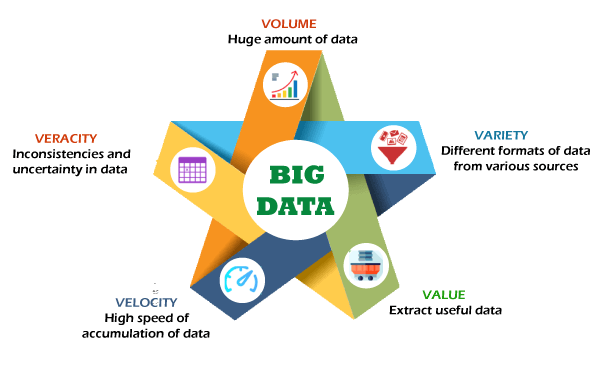 |
| Image Credit: JavaPoint |
According to McKinsey, global data creation is projected to grow to more than 180 zettabytes by 2025, up from 64.2 zettabytes in 2020. This explosion of data highlights the need for organizations to invest in big data technology to remain competitive.
One of the key trends in big data for 2024 is the increasing use of artificial intelligence (AI) and machine learning (ML) to analyze and extract insights from large data sets. This trend is driven by the need to automate data analysis and reduce the time and cost associated with manual analysis.
Another trend is the growing importance of data privacy and security. As the volume of data continues to grow, so does the risk of data breaches and privacy violations. Organizations will need to invest in technologies that can help them protect their data and comply with regulations.
In addition, there is a growing trend towards real-time data analysis. This trend is driven by the need to make faster decisions based on real-time data. Technologies such as edge computing and the Internet of Things (IoT) are enabling organizations to collect and analyze data in real-time, allowing them to respond quickly to changing business conditions.
Overall, big data will continue to be a critical technology trend in 2024 and beyond. Organizations that invest in big data technology and talent will be better positioned to leverage the power of data to drive business growth and innovation.
Cybersecurity
 | |
Cyber Security photo by: NL via Canva| |
Increased adoption of AI and ML
Artificial intelligence (AI) and machine learning (ML) are increasingly being used to identify and prevent cyber attacks. These technologies can analyze large amounts of data to detect patterns and anomalies that may indicate a security breach. As AI and ML continue to evolve, they will become even more effective at identifying and mitigating security threats.
Focus on human-centric security
Many cybersecurity experts believe that the key to effective security is a human-centric approach. This means focusing on the people who use technology, rather than just the technology itself. By understanding user behavior and motivations, businesses can develop more effective security strategies that take into account the human element of cybersecurity.
Emphasis on privacy
Privacy continues to be a major concern for individuals and businesses alike. With the increasing amount of data being collected and stored, it is more important than ever to ensure that this data is kept safe and secure. In 2024, expect to see an increased emphasis on privacy, with businesses implementing more robust privacy policies and individuals taking steps to protect their personal information.
Continued growth of the cybersecurity industry
As cybersecurity threats continue to evolve, so does the need for cybersecurity professionals. In 2024, the cybersecurity industry is expected to continue its rapid growth, with an increasing number of job opportunities and a greater demand for skilled professionals.
Overall, cybersecurity will remain a critical concern in 2024 and beyond. By staying up-to-date on the latest trends and technologies, businesses and individuals can take steps to protect themselves from cyber threats.
Cloud Computing
 |
| Cloud Computing image: Canva |
One of the key drivers of cloud computing in 2024 will be the increasing adoption of process automation and virtualization. McKinsey predicts that by 2025, more than 50 billion devices will be connected to the Industrial Internet of Things (IIoT), and this will require a significant amount of computing power. Cloud computing provides a cost-effective way to meet this demand, and it allows organizations to scale up or down as needed.
Another trend in cloud computing for 2024 is the increasing use of hybrid cloud solutions. A hybrid cloud is a combination of public and private clouds, and it allows organizations to take advantage of the benefits of both. For example, a company might use a public cloud for its less sensitive data and a private cloud for its more sensitive data. This approach allows organizations to maintain control over their sensitive data while still taking advantage of the scalability and cost-effectiveness of the public cloud.
Finally, security will continue to be a major concern for organizations using cloud computing in 2024. As more data is stored in the cloud, the risk of cyber attacks increases. To address this concern, cloud providers will need to continue to improve their security measures and provide better tools for customers to monitor and manage their security.
Overall, cloud computing will continue to be a major trend in the technology industry in 2024. Organizations will continue to adopt cloud solutions to take advantage of the benefits of cost savings, scalability, and flexibility. They will also need to address the challenges of security and find ways to take advantage of hybrid cloud solutions to meet their computing needs.
Internet of Things (IoT)
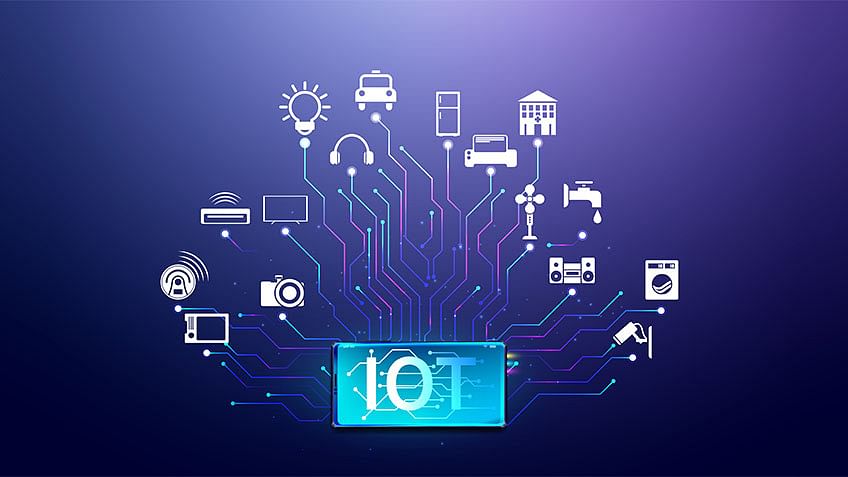 |
| Image Credit: Simplilearn |
Smart Homes
One of the most significant IoT trends in 2024 is the growth of smart homes. Smart homes are homes equipped with IoT devices that allow homeowners to control and automate various aspects of their homes, such as lighting, heating, and security systems. By 2024, the global smart home market is projected to reach $141 billion, and the number of smart homes is expected to reach 300 million.
Smart homes offer several benefits, including increased security, energy efficiency, and convenience. For example, smart thermostats can learn homeowners' habits and automatically adjust the temperature to save energy, while smart locks can be controlled remotely from a smartphone, providing an extra layer of security.
Industrial IoT
Another significant trend in IoT is the growth of industrial IoT (IIoT). IIoT refers to the use of IoT devices in industrial settings, such as manufacturing plants, to improve efficiency, productivity, and safety. By 2024, the global IIoT market is projected to reach $310 billion.
IIoT devices can collect and transmit data in real-time, allowing manufacturers to monitor their production processes and identify potential issues before they become problems. For example, sensors can detect when a machine is about to break down, allowing maintenance teams to fix the problem before it causes a production delay.
Overall, IoT is a rapidly growing field that is expected to continue to evolve in 2024. Smart homes and industrial IoT are just two examples of the many ways in which IoT is changing the world we live in.
Virtual Reality (VR) and Augmented Reality (AR)
 |
| Image Credit: XMReality |
VR involves putting on a headset to enter a fully immersive, 3D digital environment. It is commonly used in gaming, but it has many other applications, such as in education, healthcare, and engineering. VR can provide a safe and controlled environment for training, simulations, and experiments. For instance, medical students can practice surgeries in a virtual environment before performing them on real patients.
On the other hand, AR involves using a phone or glasses to overlay computer images on top of the real world. AR can enhance the user's experience by providing additional information or graphics. For example, AR can be used in museums to provide additional information about exhibits. AR can also be used in retail to allow customers to try on clothes virtually or see how furniture would look in their homes.
Both VR and AR have the potential to revolutionize various industries, including entertainment, education, healthcare, and retail. However, there are still some challenges that need to be addressed, such as the high cost of hardware, the need for high-quality content, and the potential for motion sickness in VR.
In conclusion, VR and AR are expected to continue their growth and development in 2024, with many potential applications in various industries. While there are still some challenges that need to be addressed, the future of VR and AR looks promising.
Blockchain Technology
.png) |
| Image Credit: BuiltIn |
Interoperability
Interoperability refers to the ability of different blockchain networks to communicate with each other seamlessly. This feature is essential for the growth of blockchain technology as it will allow different networks to work together, increasing their overall utility. Many projects are working on developing standards and protocols to enable interoperability between different blockchain networks.
Decentralized Finance (DeFi)
Decentralized finance, or DeFi, is an emerging trend in blockchain technology that aims to create a more open and transparent financial system. DeFi applications use blockchain technology to provide financial services such as lending, borrowing, and trading without intermediaries. DeFi has the potential to disrupt traditional finance by providing faster and cheaper services to users.
Non-Fungible Tokens (NFTs)
Non-fungible tokens, or NFTs, are unique digital assets that are stored on a blockchain. They are used to represent ownership of digital content such as art, music, and videos. NFTs have gained popularity in recent years, and their use cases are expanding. In 2024, NFTs are expected to be used in gaming, sports, and other industries.
Central Bank Digital Currencies (CBDCs)
Central bank digital currencies, or CBDCs, are digital versions of fiat currencies issued by central banks. CBDCs are expected to become more prevalent in 2024 as countries explore the potential benefits of a digital currency. CBDCs have the potential to increase financial inclusion, reduce transaction costs, and enhance the efficiency of the payment system.
Sustainability
Sustainability is becoming an increasingly important factor in blockchain technology. The energy consumption of blockchain networks has been a concern, with some networks consuming more energy than entire countries. In 2024, more blockchain projects are expected to focus on sustainability by using renewable energy sources and developing more energy-efficient consensus algorithms.
Overall, blockchain technology is still in its early stages, and its potential applications are vast. The trends mentioned above are just a few examples of how blockchain technology is evolving and impacting various industries. As blockchain technology continues to mature, it will be exciting to see what new trends emerge in the coming years.
5G Technology
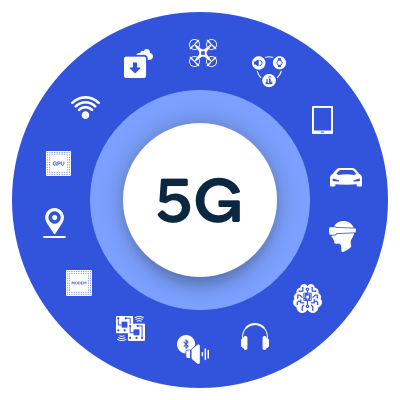 |
| Image Credit: Qualcomm |
The adoption of 5G technology is expected to surge in 2024, with a peak in 5G smartphone volumes. By 2026, forecasts predict that there will be just under five billion 5G subscriptions worldwide, with North and South-East Asia embracing 5G technology faster than other regions, according to Statista.
One of the key trends to watch in 2024 is the development of standalone 5G networks. When 5G launched a few years ago, it couldn't work independently without other networks like 4G. However, standalone 5G networks will enable faster and more efficient communication and data transfer, leading to the development of new and innovative applications.
Another trend to watch in 5G technology is the integration of 5G with other emerging technologies like artificial intelligence (AI) and the Internet of Things (IoT). This integration will enable the development of smart cities, autonomous vehicles, and other advanced applications that require high-speed and low-latency communication.
Finally, 5G technology is also expected to drive the development of edge computing, which brings computing power closer to the end-user. This will enable faster processing of data, reduced latency, and improved security, leading to the development of new applications and services.
Overall, 5G technology is expected to revolutionize the way we communicate and interact with technology in 2024 and beyond.
Autonomous Vehicles
 |
| Image Credit: Forbes |
The knock-on effects of autonomous cars on other industries could be significant. By reducing the number of car accidents and collisions, AD technology could limit the number of consumers requiring roadside assistance and repairs. That may put pressure on those types of businesses as consumer adoption of AD rises.
Mercedes-Benz is planning to equip its entire lineup with autonomous capabilities starting in 2024. The newly announced partnership with Nvidia will include over-the-air upgrades and could even yield a Mercedes App Store.
Companies are also pivoting their development and resourcing efforts towards delivery vehicles and automated trucks amid difficulties in commercializing Mobility as a Service (MaaS). The market is shifting from robo-taxis to automated trucks and delivery vehicles.
As with any new technology, there are concerns about the safety and security of autonomous vehicles. However, with continued advancements in technology and increased investment in research and development, it is likely that autonomous vehicles will become more prevalent in the coming years.
Overall, the future of autonomous vehicles is promising, and it will be interesting to see how this technology continues to evolve and impact various industries.
Robotics
 |
| image credit NL via Canva |
One of the main trends in robotics is the development of collaborative robots, also known as cobots. These robots are designed to work alongside human workers, performing repetitive or dangerous tasks, while the humans focus on more complex or creative work. Cobots are expected to become more affordable and accessible, making them a valuable addition to many workplaces.
Another trend in robotics is the use of AI and machine learning to enhance robot capabilities. This includes teaching robots to learn from their environment and adapt to new situations, as well as improving their ability to interact with humans. This trend is expected to lead to the development of more sophisticated robots that can perform a wider range of tasks.
In addition to these trends, the use of robots in manufacturing is expected to continue to grow. According to a report by TechRepublic, the global automated guided vehicle market is predicted to reach $2.3 billion by 2024. Automated guided vehicles are most often seen in manufacturing industries, but have also increased in popularity in other sectors such as healthcare and logistics.
Overall, the robotics industry is poised for significant growth in 2024, with new developments in cobots, AI, and manufacturing expected to drive innovation and expansion.
Edge Computing
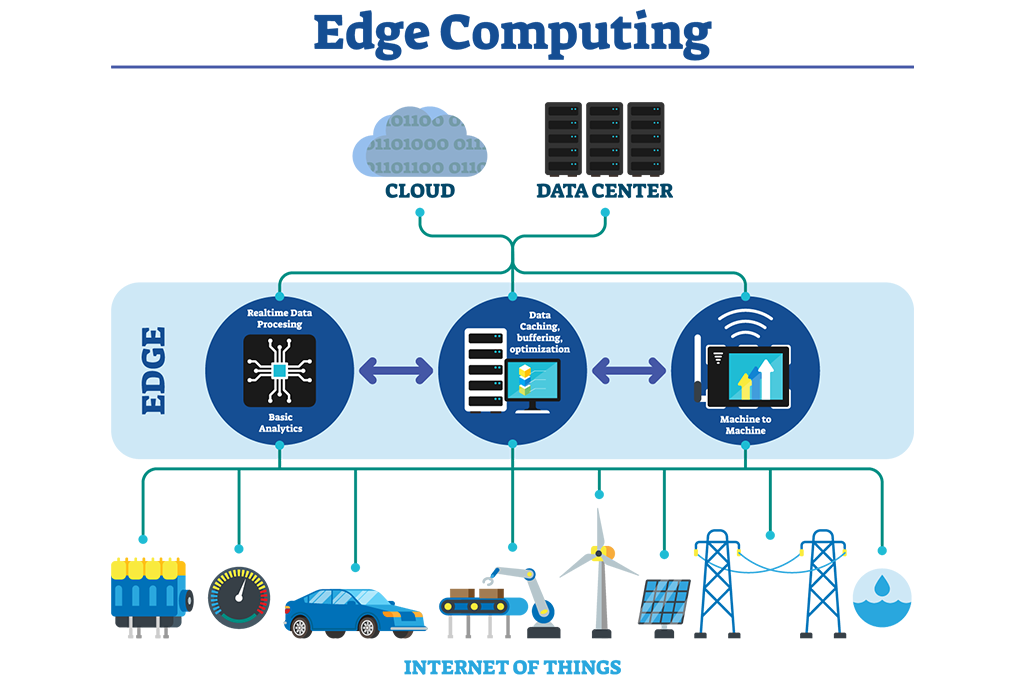 |
| Image Credit: IEEE Innovation at work |
Edge computing is a distributed computing paradigm that brings computation
and data storage closer to the location where it is needed, improving response
times and reducing the amount of data that needs to be transmitted over the
network. According to a report
by IDC, worldwide spending on edge computing will reach $250 billion in 2024.
One of the main drivers of edge computing is the increasing number of
Internet of Things (IoT) devices, which generate vast amounts of data that need
to be processed and analyzed in real-time. Edge computing allows this data to
be processed locally, reducing latency and improving reliability. Another
advantage of edge computing is that it can operate in environments with limited
or intermittent connectivity, making it suitable for use cases such as remote
monitoring and predictive maintenance.
Edge computing can be implemented using a variety of hardware and software
technologies, including microcontrollers, gateways, and edge servers. According
to a guestarticle on Spiceworks, there are five trends to watch in the future of edge
computing. These include:
- Edge
computing for both large and small enterprises
- Increased
use of artificial intelligence (AI) and machine learning (ML) at the edge
- The rise
of edge-as-a-service (EaaS) offerings
- The
adoption of edge-native application architectures
- The
emergence of new security challenges and solutions
As edge computing continues to evolve, it is expected to play an
increasingly important role in enabling new applications and services that
require low latency, high reliability, and real-time processing.
Quantum Computing
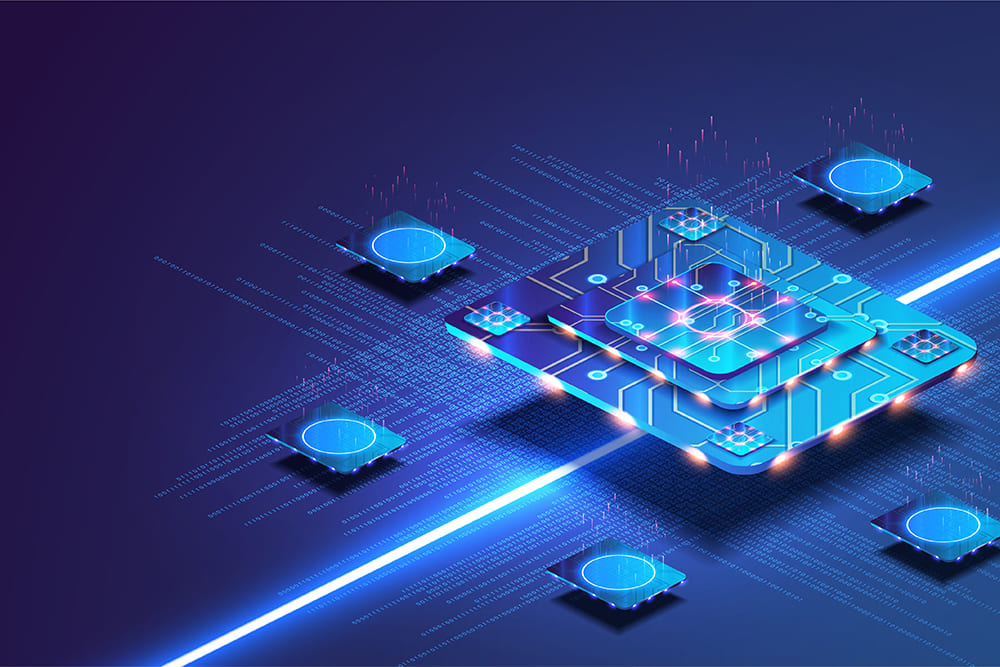 |
| Image credit: Bernard Marr |
Quantum computing is a rapidly evolving technology that has the potential to
revolutionize the way we process information. By harnessing the principles of
quantum mechanics, quantum computers can solve certain problems exponentially
faster than classical computers.
According to a report by Hyperion Research, the quantum computing market is
projected to grow from $320 million in 2020 to $830 million in 2024, with a
compound annual growth rate of 27%. This growth is being driven by the
increasing demand for more powerful computing capabilities to solve complex
problems in fields such as chemistry, finance, and logistics.
One of the biggest challenges in the development of quantum computing is the
issue of scalability. Quantum computers are notoriously difficult to build and
maintain, and it is currently unclear how many qubits (the basic unit of
quantum information) will be needed to achieve practical quantum computing.
Despite these challenges, there have been significant advances in the field
of quantum computing in recent years. Companies such as IBM, Google, and
Microsoft are all investing heavily in quantum computing research and
development, and there are now several cloud-based quantum computing platforms
that allow researchers and developers to experiment with quantum algorithms and
applications.
In the coming years, it is expected that quantum computing will continue to
evolve and mature, with more powerful quantum computers and a wider range of
quantum applications becoming available. As this technology continues to
advance, it has the potential to transform industries and enable new
breakthroughs in science and engineering.
Sustainable and Green Tech
·
Renewable Energy Sources: The
use of renewable energy sources such as wind, solar, and hydropower is expected
to continue to grow in popularity. In fact, according to an infographic based
on the latest Climate Watch data, energy usage contributes to 73.2% of global
greenhouse gas emissions, making the switch to renewable energy sources a key
step in reducing our carbon footprint.
·
Green Transportation: The
transportation industry is also making strides towards sustainability. Electric
vehicles (EVs) are becoming more common, and the infrastructure to support them
is growing. In addition, alternative fuels such as hydrogen are being explored
as a way to reduce emissions from transportation.
·
Circular Economy: The circular
economy is a system in which waste is minimized and resources are kept in use
for as long as possible. This approach is gaining traction as a way to reduce
waste and conserve resources. Companies are exploring ways to design products
for longevity and reuse, and to create closed-loop supply chains that minimize
waste.
·
Smart Buildings: Smart
buildings are designed to be energy-efficient and sustainable. They use
technology to optimize energy use, reduce waste, and improve indoor air
quality. This trend is expected to continue as more companies and individuals
seek to reduce their environmental impact.
·
Green Computing: Green
computing refers to the use of computing resources in an environmentally
sustainable way. This includes everything from energy-efficient data centers to
the use of virtual meetings to reduce travel. As more and more of our lives
move online, the need for green computing will only continue to grow.
Overall, sustainable and green tech is an important trend to watch for in
2024 and beyond. As concerns about climate change and environmental
sustainability continue to grow, the adoption of sustainable and green
technologies will become increasingly important.
Healthcare Technology
Photo Credit: Health EuropaHealthcare technology is advancing at a rapid pace, and it is expected to
continue doing so in 2024. Here are some of the top healthcare technology
trends that are expected to shape the industry in the coming years.
1. Telemedicine
Telemedicine has been on the rise for several years, but the Covid-19
pandemic has accelerated its adoption. In 2024, telemedicine is expected to
become even more prevalent, making it easier for patients to access healthcare
remotely. This technology allows patients to consult with doctors via video
conferencing, reducing the need for in-person visits.
2. Wearable Technology
Wearable technology, such as smartwatches and fitness trackers, is becoming
increasingly popular. In healthcare, wearable devices can be used to monitor a
patient's health remotely. For example, a smartwatch can track a patient's
heart rate and send alerts to their doctor if there are any abnormalities.
3. Artificial Intelligence
Artificial intelligence (AI) is being used in healthcare to improve patient
outcomes and reduce costs. In 2024, AI is expected to become even more
prevalent, with applications such as predictive analytics and personalized
medicine. AI can also be used to automate administrative tasks, freeing up
healthcare professionals to focus on patient care.
4. Virtual Reality
Virtual reality (VR) technology is being used in healthcare to simulate
medical procedures and train healthcare professionals. In 2024, VR is expected
to become even more prevalent, with applications such as pain management and
mental health therapy.
5. Blockchain
Blockchain technology is being used in healthcare to improve data security
and interoperability. In 2024, blockchain is expected to become even more
prevalent, with applications such as secure medical record sharing and drug
supply chain management.
Overall, healthcare technology is expected to continue advancing in 2024,
improving patient outcomes and reducing costs. As these technologies become
more prevalent, it is important for healthcare professionals to stay up-to-date
with the latest trends and applications.
Smart Homes and Cities
 |
| image credit: Researchgate |
Smart homes and cities are becoming increasingly common in today's world.
With the rise of the Internet of Things (IoT), homes and cities are becoming
more connected and intelligent. According to DeloitteInsights, cities are working towards providing digital, clean, intelligent,
autonomous, and intermodal mobility, with more walking and cycling spaces,
where transport is commonly provided as a service. This means that cities are
moving towards offering more sustainable and intelligent mobility solutions,
which will help reduce traffic congestion and improve air quality.
In addition to mobility solutions, smart homes are also becoming
increasingly popular. According to Statista, over 130
million households around the world are home to at least one smart home device.
This number is expected to increase significantly in the coming years, with all
smart home devices set for huge growth in the near future. This is due to the
fact that smart homes offer a range of benefits, including increased energy
efficiency, improved security, and greater convenience.
One of the top smart home trends for 2024 is the increasing integration of
smart home technology. As mentioned above, smart homes are becoming more
connected and intelligent. This means that smart home technology is now being
integrated into a range of everyday devices, including kitchen appliances, lighting,
and heating systems. This integration means that users can control all of their
smart home devices from a single app or device, making it easier to manage
their homes.
Another trend in smart homes and cities is the use of artificial
intelligence (AI). AI is being used to make homes and cities more intelligent
and efficient. For example, AI can be used to optimize energy usage in homes,
reducing energy bills and carbon emissions. In cities, AI can be used to
optimize traffic flow, reducing congestion and improving air quality. As AI
technology continues to improve, it is likely that it will become an
increasingly important part of smart homes and cities.
Overall, smart homes and cities are set to become increasingly common in the
coming years. With the rise of IoT and AI, homes and cities are becoming more
connected and intelligent, offering a range of benefits to users.
Voice Technology
Voice technology has been rapidly evolving in recent years, and it is
expected to continue to grow in popularity in the coming years. According to Statista, the
number of digital voice assistants in use worldwide is projected to reach 8.4
billion by 2024. This growth is due in part to the increasing use of voice
assistants in smart homes, smart cars, and other Internet of Things (IoT)
devices.
One of the most significant advances in voice technology is the development
of conversational AI, which allows voice assistants to understand and respond
to natural language. Innovators are tackling current limitations to
conversational AI through their work in five areas, including natural language
understanding, context awareness, emotion recognition, speech synthesis, and
speech recognition, according to DeloitteInsights. These advancements are expected to lead to much broader adoption
of conversational bots in the near future.
The speech and voice recognition market is projected to grow significantly
in the coming years. According to FortuneBusiness Insights, the global speech and voice recognition market size was
valued at USD 10.42 billion in 2022 and is projected to grow to USD 59.62
billion by 2030, exhibiting a CAGR of 24.8% during the forecast period. This
growth is due in part to the increasing demand for voice-enabled virtual
assistants and the growing use of voice biometrics for security purposes.
Voice technology is also expected to play an increasingly important role in
healthcare. According to the WorldEconomic Forum, voice technology will likely play an increased role in
caring for the world's aging population. This includes the use of voice
assistants to remind patients to take their medication, monitor vital signs,
and provide companionship. Additionally, voice technology is expected to play a
role in mental health care, with voice assistants providing emotional support
and counseling to patients.
Overall, voice technology is expected to continue to grow in popularity and
become increasingly integrated into our daily lives. From smart homes to
healthcare, voice assistants are becoming an essential part of our technology
ecosystem, and their capabilities are only expected to expand in the coming
years.
Space Technology
In 2024, the space industry is expected to experience significant growth.
The development of new technologies such as reusable launch vehicles,
SmallSats, and CubeSats is driving the expansion of the sector. These
innovations have made space exploration more affordable and accessible, leading
to an increase in the number of companies investing in space technology.
One of the most significant trends in space technology is the rise of
commercial space travel. Companies such as SpaceX, Blue Origin, and Virgin
Galactic are working to make space tourism a reality. They are developing
reusable rockets and spacecraft that can take passengers to space and back. In
2024, we can expect to see more progress in this area, with the first
commercial space flights taking place.
Another trend in space technology is the development of satellite
constellations. Companies such as SpaceX, OneWeb, and Amazon are planning to
launch thousands of satellites to provide global internet coverage. These
satellites will be smaller and more affordable than traditional satellites,
making it easier for companies to launch them into space. In 2024, we can
expect to see the launch of several satellite constellations, which will
revolutionize the way we connect to the internet.
Advancements in space technology are also leading to improvements in Earth
observation. New satellites are being developed that can capture
high-resolution images of the Earth, providing valuable data for a range of
applications. For example, these satellites can be used to monitor weather
patterns, track deforestation, and detect changes in the Earth's surface. In
2024, we can expect to see the launch of several new Earth observation satellites,
which will provide even more detailed data about our planet.
Overall, the space industry is set to experience significant growth in 2024,
driven by new technologies and the rise of commercial space travel. With more
companies investing in space technology, we can expect to see even more
innovations in the years to come.
Bio Technology
Photo by: BakingBusiness via Adobe Stack·
Gene Editing: Gene editing
techniques like CRISPR-Cas9 will continue to advance, allowing for more precise
and efficient modifications to DNA. This technology has the potential to cure
genetic diseases and improve crop yields.
·
Synthetic Biology: Synthetic
biology involves designing new biological systems from scratch using DNA. In
2024, this technology will continue to be used to create new medicines,
biofuels, and materials.
·
Personalized Medicine: Thanks
to advances in biotechnology, personalized medicine is becoming a reality. In
2024, we can expect to see more targeted therapies that are tailored to an
individual's genetic makeup.
·
Microbiome Research: The human
microbiome, which consists of trillions of microorganisms living in and on our
bodies, is a hot topic in biotechnology. In 2024, we can expect to see more
research into how the microbiome affects our health and how we can manipulate
it to prevent disease.
·
Cell Therapy: Cell therapy
involves using living cells to treat or cure diseases. In 2024, we can expect
to see more breakthroughs in this field, particularly in the areas of cancer
and regenerative medicine.
Overall, biotechnology is an exciting field that is poised for significant
growth in the coming years. As these technologies become more advanced and
widely available, they have the potential to improve our lives in countless
ways.
Nano Technology
Nano technology is the science of manipulating matter on a molecular or
atomic scale. It has the potential to revolutionize the way we live our lives.
Nano technology is already being used in various fields, including medicine,
electronics, and energy. In the coming years, we can expect to see even more
innovative applications of this technology.
One of the most exciting applications of nano technology is in the field of
medicine. Researchers are working on developing nanorobots that can deliver
drugs directly to cancer cells, without harming healthy cells. These nanorobots
can also be used to repair damaged tissues and organs, which could lead to
breakthroughs in regenerative medicine.
Nano technology is also being used to develop more efficient and sustainable
energy solutions. For example, researchers are working on developing nano
materials that can be used to improve the efficiency of solar cells. These
materials can also be used to create more efficient batteries, which could help
to reduce our reliance on fossil fuels.
In the field of electronics, nano technology is already being used to create
smaller and more powerful devices. For example, nano transistors are being used
to create faster and more efficient computer processors. Nano technology is
also being used to create flexible and wearable electronics, which could lead
to breakthroughs in the field of healthcare.
Overall, nano technology has the potential to transform the way we live our
lives. As researchers continue to make breakthroughs in this field, we can
expect to see even more innovative applications of this technology in the
coming years.
E-commerce and Digital Payments
 |
| Photo credit: modo |
E-commerce has been growing steadily over the past few years, and it is
expected to continue growing in 2024. The COVID-19 pandemic has accelerated the
shift to online shopping, and this trend is likely to continue. In 2024,
e-commerce is expected to account for an even larger share of overall retail
sales.
Digital payments are also expected to become increasingly popular in 2024.
As more people shop online, they will need a convenient and secure way to pay
for their purchases. Digital payments are more convenient than traditional
payment methods like cash and checks, and they are also more secure.
Mobile payments are expected to be particularly popular in 2024. According
to a report by FIS, mobile wallets are predicted to overtake physical cards as
the most popular online payment method in the next three years. This trend is
driven by mobile commerce, and mobile wallets are expected to account for over
a third of all payments globally by 2024.
In addition to mobile payments, other forms of digital payments are also
expected to become more popular in 2024. For example, contactless payments are
already popular in some parts of the world, and they are expected to become
more widespread in the coming years. Contactless payments are more hygienic
than traditional payment methods, and they are also faster and more convenient.
Overall, e-commerce and digital payments are two trends that are expected to
continue growing in 2024. As more people shop online, they will need a
convenient and secure way to pay for their purchases, and digital payments are
the perfect solution.
Social Media Innovations
Social media is an ever-evolving landscape, and 2024 will be no different.
Here are some of the top social media innovations to look out for in the coming
year:
1. Augmented Reality (AR) Filters
AR filters have been popular on social media platforms like Snapchat and
Instagram for a while now, but they are only going to get more advanced and
ubiquitous. In 2024, expect to see AR filters that are more realistic and
interactive, allowing users to try on virtual clothing or makeup, or even play
games.
2. Social Commerce
Social media platforms have been experimenting with social commerce for a
while, but in 2024, it will become a mainstream way for people to shop. Social
commerce will allow users to buy products directly from social media posts,
making the shopping experience more seamless and convenient.
3. Niche Social Media Platforms
While Facebook, Twitter, and Instagram are still the dominant social media
platforms, niche platforms catering to specific interests or communities are on
the rise. In 2024, expect to see more niche platforms like Vero (for
photographers) or Nextdoor (for local communities) gain traction.
4. Live Video Streaming
Live video streaming has become increasingly popular on social media
platforms like Facebook and Instagram, and in 2024, it will continue to grow.
Live streaming allows users to connect with their audience in real-time, making
it a powerful tool for influencers, brands, and businesses.
5. Personalized Content
Social media algorithms are becoming more sophisticated, allowing for more
personalized content to be delivered to users. In 2024, expect to see even more
personalized content, tailored to users' interests and preferences.
Overall, social media in 2024 will be more immersive, convenient, and
personalized than ever before. These innovations will make social media an even
more integral part of people's lives, both personally and professionally.
Tech in Education
photo credit: Lam ResearchTechnology is transforming the way people learn and acquire knowledge. In
2024, it will continue to play a significant role in education, from primary to
tertiary levels. Below are some of the top technology trends that will shape
the future of education.
1. Personalized Learning
Personalized learning is an approach that tailors education to the needs,
interests, and abilities of individual learners. With the help of artificial
intelligence (AI), machine learning, and big data, educators can create
customized learning paths for each student. This approach can improve student
engagement, motivation, and academic performance.
2. Virtual and Augmented Reality
Virtual and augmented reality (VR/AR) technologies can create immersive
learning experiences that simulate real-world environments and scenarios. These
technologies can be used to teach complex concepts and skills, such as science,
engineering, and healthcare. They can also enhance student creativity and
collaboration.
3. Gamification
Gamification is the use of game elements, such as points, badges, and
leaderboards, in non-game contexts, such as education. This approach can make
learning more fun, interactive, and engaging. It can also motivate students to
complete tasks, solve problems, and achieve goals.
4. Online and Blended Learning
Online and blended learning models are gaining popularity, especially in the
wake of the COVID-19 pandemic. These models allow students to access
educational content and resources anytime, anywhere, and on any device. They
can also provide flexibility, convenience, and cost-effectiveness.
5. Artificial Intelligence
Artificial intelligence (AI) can automate administrative tasks, such as
grading, scheduling, and feedback, and provide personalized recommendations for
students and teachers. AI-powered chatbots can also answer students' questions
and provide support 24/7. However, there are concerns about the ethical and
privacy implications of AI in education.
6. Blockchain
Blockchain technology can provide secure and transparent records of student
achievements, such as degrees, certificates, and badges. This can help
employers and educational institutions verify credentials and reduce fraud. It
can also empower students to control their own learning data and share it with
others.
In summary, technology is transforming education in many ways, from personalized learning to blockchain-based credentials. These trends offer exciting opportunities and challenges for educators, students, and policymakers alike. Click here to read a comprehensive article on current trends in education and learning
Wearable Technology
Photo credit: techcrunchWearable technology has been on the rise for several years, and it continues
to be a significant trend in 2024. The wearable tech market is projected to
grow from nearly $27 billion in 2019 to $64 billion by 2024, according to a
report by GlobalData [1]. The increasing adoption of smart wearable technology
products among consumers is driving industry growth. These devices aid in
monitoring health by keeping track of fitness levels, heart rate, and sleep
patterns.
In 2024, wearable technology is expected to become more advanced, with more
features and capabilities. One of the significant trends in wearable technology
is the integration of artificial intelligence (AI) and machine learning (ML) to
enhance the user experience. Wearable devices with AI and ML technology can
learn from the user's behavior and preferences and provide personalized
recommendations and insights.
Another trend in wearable technology is the development of smart fabrics and
clothing. Smart fabrics are textiles that have been enhanced with technology to
provide additional functionality, such as temperature regulation,
moisture-wicking, and UV protection. In 2024, smart fabrics are expected to
become more prevalent in the fitness and healthcare industries.
The use of wearable technology in the workplace is also expected to increase
in 2024. Wearable devices can help improve workplace safety, monitor employee
health, and increase productivity. For example, wearable devices can track
employee movements and provide real-time feedback on proper lifting techniques
to prevent workplace injuries.
Overall, wearable technology is a rapidly growing trend that is expected to
continue in 2024. The integration of AI and ML, the development of smart
fabrics, and the use of wearable technology in the workplace are just a few of
the trends that will shape the future of wearable technology.
Gaming and Entertainment Technology
Photo Credit: Telecom Review AfricaThe gaming and entertainment industry has been rapidly evolving in recent
years, and this trend is expected to continue in 2024. Here are some of the top
technology trends that are expected to shape the gaming and entertainment
industry in 2024:
1. Cloud Gaming
Cloud gaming is expected to become more popular in 2024, as it allows gamers
to play their favorite games on any device with an internet connection. With
cloud gaming, gamers do not need to have a powerful gaming PC or console to
enjoy high-quality gaming experiences. Instead, games are streamed from the
cloud, allowing gamers to play on their smartphones, tablets, or laptops.
2. Virtual and Augmented Reality
Virtual and augmented reality technologies are expected to become more
mainstream in the gaming and entertainment industry in 2024. These technologies
can provide immersive gaming experiences that allow gamers to feel like they
are part of the game world. Virtual and augmented reality can also be used to
enhance live entertainment experiences, such as concerts and sporting events.
3. Artificial Intelligence
Artificial intelligence is expected to play a larger role in the gaming and
entertainment industry in 2024. AI can be used to create more realistic and
intelligent non-player characters (NPCs) in games, making the gaming experience
more immersive. AI can also be used to personalize the gaming experience for
individual players, by analyzing their behavior and preferences.
4. Blockchain
Blockchain technology is expected to be used more in the gaming and
entertainment industry in 2024. Blockchain can be used to create decentralized
gaming platforms, where players can buy and sell in-game items without the need
for a middleman. Blockchain can also be used to create secure and transparent
voting systems for events such as award shows.
5. 5G
5G technology is expected to become more widespread in 2024, which will
enable faster and more reliable internet connections. This will allow for more
seamless streaming of games and other entertainment content, as well as more
immersive virtual and augmented reality experiences.
Overall, these technology trends are expected to shape the gaming and
entertainment industry in 2024, providing gamers and entertainment enthusiasts
with more immersive and personalized experiences.
In conclusion, the top 20 technology trends for 2024 present a future brimming with innovation and transformative potential. From advancements in AI and quantum computing to the evolution of XR, these trends will shape our world and pave the way for unprecedented opportunities. Embracing these technological advancements and staying ahead of the curve will be crucial in unlocking the immense possibilities that the future holds. So, gear up for the exciting journey that lies ahead as we embrace the future of innovation.
References
[1] Source: CNET
Nano technology


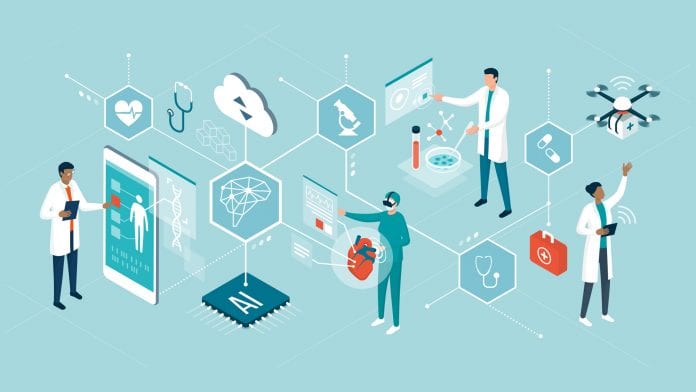


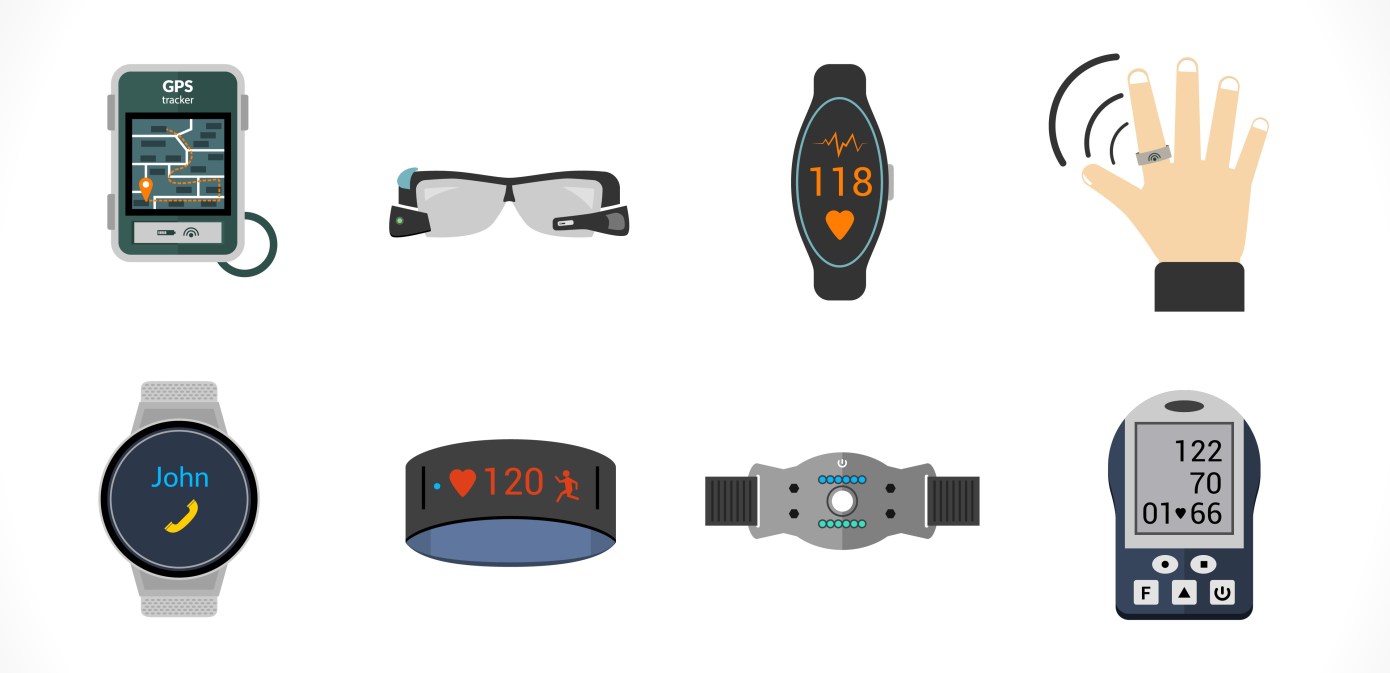

Comments
Post a Comment